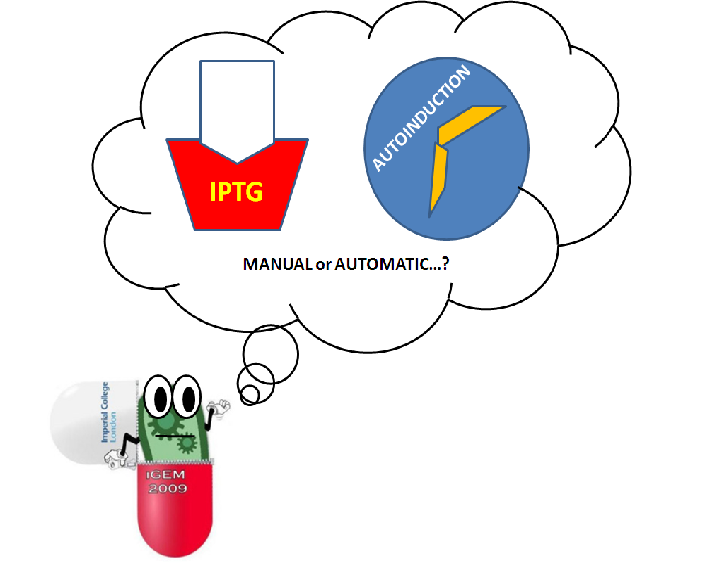Team:Imperial College London/Temporal Control/Autoinduction
From 2009.igem.org
(Difference between revisions)
(→Autoinduction) |
|||
| Line 1: | Line 1: | ||
{{Imperial/09/TemplateTop}} | {{Imperial/09/TemplateTop}} | ||
<font face='Calibri' size='5'>Autoinduction</font><br><br> | <font face='Calibri' size='5'>Autoinduction</font><br><br> | ||
| - | [[Image: | + | |
| + | [[Image:II09_Autoinduction.jpg|left|350px]] | ||
Conventional induction relies on adding small amounts of IPTG into a cell culture. Autoinduction media instead rely on culture conditions for induction. When glucose levels are low due to cellular consumption, the CRP promoter in cells is activated, and induction occurs automatically. Compared to IPTG, current methods of autoinduction allow for higher density without the need to monitor cell growth [1]. | Conventional induction relies on adding small amounts of IPTG into a cell culture. Autoinduction media instead rely on culture conditions for induction. When glucose levels are low due to cellular consumption, the CRP promoter in cells is activated, and induction occurs automatically. Compared to IPTG, current methods of autoinduction allow for higher density without the need to monitor cell growth [1]. | ||
Revision as of 16:44, 18 September 2009

Autoinduction
Conventional induction relies on adding small amounts of IPTG into a cell culture. Autoinduction media instead rely on culture conditions for induction. When glucose levels are low due to cellular consumption, the CRP promoter in cells is activated, and induction occurs automatically. Compared to IPTG, current methods of autoinduction allow for higher density without the need to monitor cell growth [1].
 "
"




